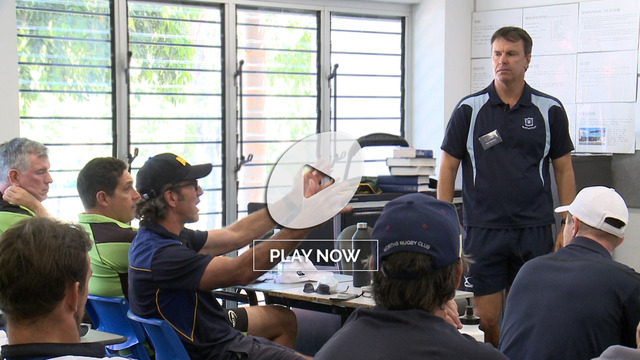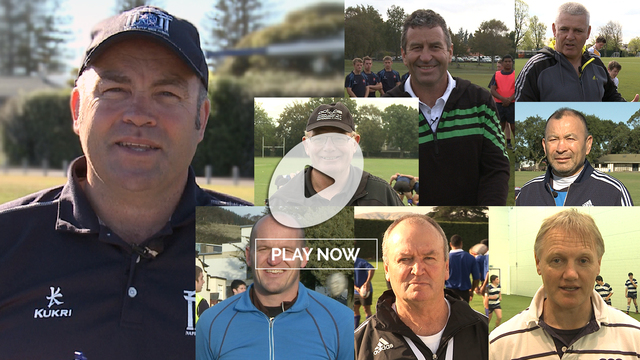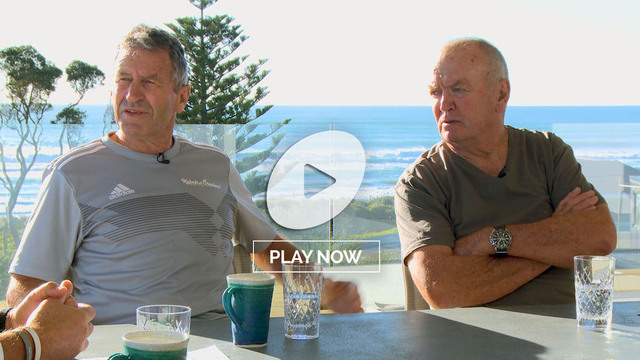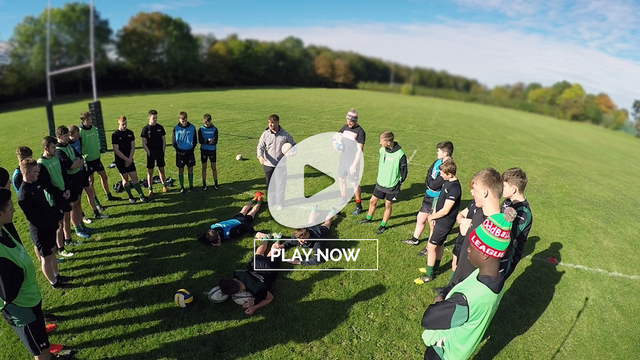Game-planning for natural weaknesses
In his short and succinct module on game-planning, Sir Graham Henry suggests that a plan can start with the identification of what he calls ‘natural weaknesses’ in the opponent. One of the foremost among those weaknesses is the transition area between the last forward and the first back in the defensive line.
This can occur most obviously at 1st phase lineout and scrum, and Graham Henry points to the transition area between the flanker and the number 10 from scrums. Why is this area weak? Because the two players involved are often moving at different speeds, both mentally and physically, and frequently ‘not on the same page’ in defence.
Depending upon the formation adopted by the defensive side, the transition area can be even more significant from lineout. In my experience working for Wales and England, French teams (at national level) have always favoured a defensive formation which has the number 9 defending in the tram-lines or 5 metre corridor, and positions the hooker at the ‘tail-gunner’, or the first defender around the end of the lineout.
Some teams can get away with this idea. Ireland for example, have a good defensive hooker in Rory Best, whose presence inside Johnny Sexton gives a strong option to implement the choke tackle if a ball-carrier comes into their zone of influence. Both are experts at holding up the runner and effecting the turnover.
Not all teams are as lucky as Ireland however, and the presence of a poor defender underneath 10 can often be exploited by shrewd game-planning. Leinster’s planning for their recent European Cup match against Montpellier identified this area as weak before the game.
Montpellier defend the lineout with their Georgian hooker Shalva Mamukashvili as the first defender around end underneath the 10, South African Frans Steyn. For all his other virtues, Mamukashivili is not a reliable defender in these situations, so the natural weakness was accentuated.
The first opportunity to exploit the weakness came in the first quarter of the match in the 15th minute, at a lineout 40 metres from the Montpellier goal-line:
As Devin Toner wins the lineout ball, Mamukashvili’s shaven head is clearly visible just outside and behind the tail of the lineout (15:15). The idea of the subsequent play is to overload him and exploit the wide gap between the hooker and Frans Steyn.
The two keys – #6 Jack Conan and #9 Luke McGrath. As Toner returns to terra firma, Leinster’s number 6 Jack Conan peels away from the front of the line and number 9 Luke McGrath heads directly towards the zone occupied Mamukashvili. Both players are eyeing the gap between the Montpellier numbers 2 and 10.
Use of the fake drive. Five of the Leinster forwards concentrate around Toner and fake the drive from lineout. This buys Conan some time to get into position, while the threat of the drive forces Mamukashvili to ‘stay honest’ and prevents him shuffling out to link up with Steyn.
The 9-6-11 overload. With Conan now in position at 15:17 and number 11 Rory O’Loughlin running inside him, the overload attack can begin. Luke McGrath runs straight towards Mamukashvili, who is angled sharply in towards him just before the pass is released at 15:18. At that moment, McGrath could pass to either O’Loughlin or Conan and they would be in business, in the big hole now created between Mamukashvili and Steyn. In the event he picks O’Loughlin, who beats the Georgian easily before making the break downfield. Leinster scored a try a couple of phases later.
This superbly-conceived and executed try was not the end of the story however. A second opportunity to exploit exactly the same zone occurred in the second period, this time with Mamukashvili’s replacement Charles Geli on the field.
On this occasion the maul is fully-formed, with all eight Leinster forwards and six from Montpellier engaged in the drive. At 64:14, the Leinster inside centre, #12 Robbie Henshaw crashes down to occupy the attention of the Montpellier defender in the 10 channel fully. This leaves McGrath in a one-on-one with Geli at the side of the maul, and his acceleration off the mark is quite sufficient to win that contest and enable him to score a try under the posts.
Summary
The Chinese general-philosopher Sun-Tzu once said in The Art of War, “If you know the enemy and know yourself, you need not fear the result of one hundred battles. If you know yourself but not the enemy, for every victory gained you will also suffer a defeat… Opportunities multiply as they are seized.”
The same is true of modern sporting ‘warfare’. Leinster knew their enemy and they knew they had the weapons to exploit him – and the opportunities multiplied as they were seized.






















